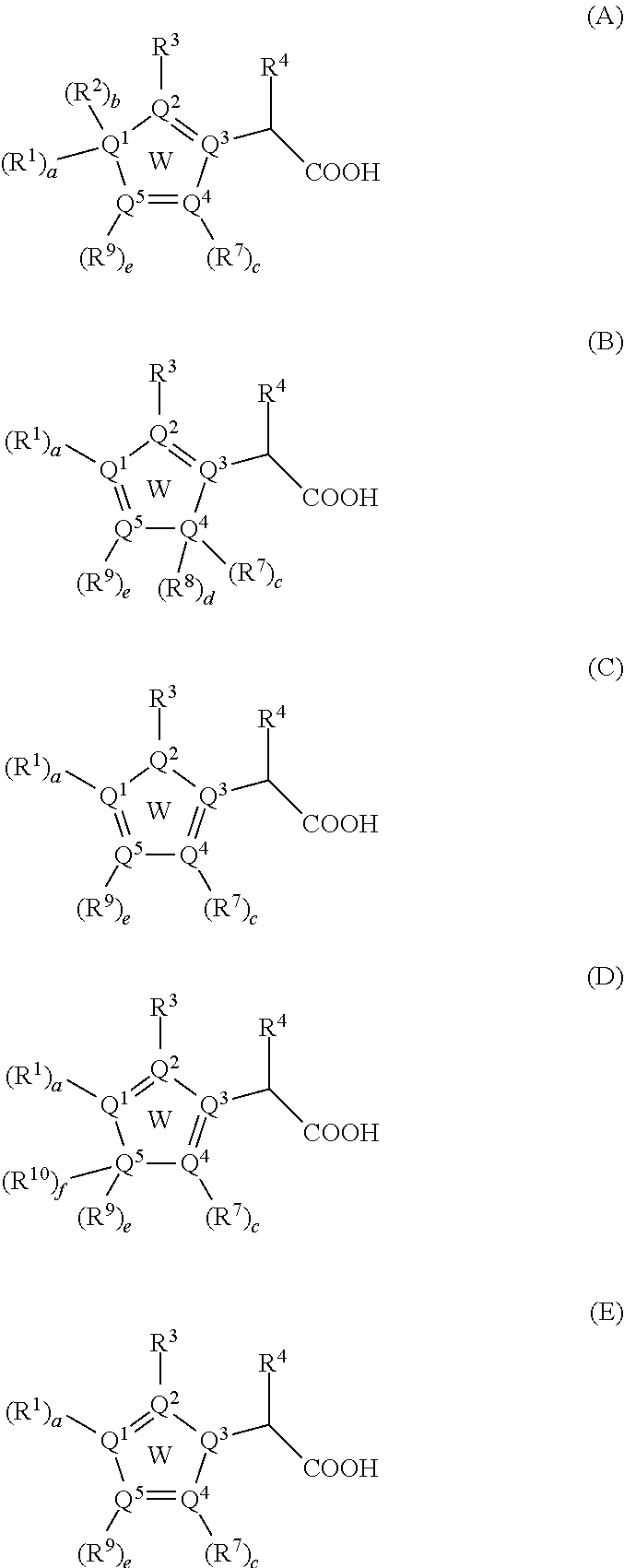Inhibitors of viral replication, their process of preparation and their therapeutical uses
a technology of inhibitors and viral replication, applied in the field of compounds, can solve the problems of drug-resistant viruses, significant toxicities, and inability to cure hiv infections,
- Summary
- Abstract
- Description
- Claims
- Application Information
AI Technical Summary
Benefits of technology
Problems solved by technology
Method used
Image
Examples
example 1
Synthesis of potassium 2-(tert-butoxy)-2-(1-methyl-3-phenyl-1H-indol-2-yl)acetate
[0248]
Step 1: Preparation of intermediate 3-phenyl-1H-indole (1a)
[0249]A solution of phenylhydrazine (1 mL, 10.15 mmol) and phenylacetaldehyde (1.32 mL, 10.15 mmol) in acetic acid was refluxed for 6 hours under a nitrogen atmosphere. After cooling to room temperature, the reaction mixture was poured into a saturated aqueous solution of sodium carbonate (100 mL) at 0° C. After extraction with dichloromethane (2×30 mL), the organic layer was dried over sodium sulfate, filtered and evaporated to dryness. The residue was purified by flash chromatography on silica gel (cyclohexane / ethyl acetate 90 / 10) to afford the desired indole (1a) as a pale oil (940 mg, 4.86 mmol, 48%).
[0250]1H NMR (400 MHz, CDCl3) δ 7.19-7.32 (m, 3H), 7.37 (d, J=2.5 Hz, 1H), 7.43-7.48 (m, 3H), 7.68 (d, J=8.3 Hz, 2H), 7.96 (d, J=8.0 Hz, 1H), 8.22 (broad s, 1H).
[0251]MS m / z ([M+H]+) 194.
Step 2: Preparation of intermediate 1-methyl-3-pheny...
example 2
Synthesis of potassium 2-(tert-butoxy)-2-(2-phenyl-1-benzothiophen-3-yl)acetate
[0264]
Step 1: Preparation of intermediate 2-phenyl-1-benzothiophene (2a)
[0265]A solution of benzothiopheneboronic acid (1 g, 5.61 mmol) in ethanol (23 mL) was added to a mixture of iodobenzene (560 μL, 5 mmol), palladium tetrakis(triphenylphosphine) (460 mg, 0.4 mmol) and sodium carbonate (2.38 g, 22.4 mmol) in a mixture of toluene (15 mL) and water (15 mL). The reaction mixture was refluxed for 6 hours and then concentrated in vacuo. The residue was partitioned between ethyl acetate (30 mL) and water (10 mL). The biphasic mixture was acidified with an aqueous solution of hydrochloric acid 1N until pH 2. The aqueous layer was extracted with ethyl acetate (2×20 mL) and the organic layer was washed with water (10 mL), brine (10 mL), dried over sodium sulfate, filtered and evaporated to dryness. The residue was purified by flash chromatography on silica gel (cyclohexane / ethyl acetate 90 / 10) to afford the des...
example 3
Synthesis of 2-(tert-butoxy)-2-(3-phenyl-1-benzothiophen-2-yl)acetic acid
[0279]
Step 1: Preparation of intermediate 3-phenyl-1-benzothiophene (3a)
[0280]A solution of benzothiopheneboronic acid (1 g, 5.61 mmol) in ethanol (23 mL) was added to a mixture of iodobenzene (560 μL, 5 mmol), palladium tetrakis(triphenylphosphine) (460 mg, 0.4 mmol) and sodium carbonate (2.38 g, 22.4 mmol) in a mixture of toluene (15 mL) and water (15 mL). The reaction mixture was refluxed for 6 hours and then concentrated in vacuo. The residue was partitioned between ethyl acetate (30 mL) and water (10 mL). The biphasic mixture was acidified with an aqueous solution of hydrochloric acid 1N until pH 2. The aqueous layer was extracted with ethyl acetate (2×20 mL) and the organic layer was washed with water (10 mL), brine (10 mL), dried over sodium sulfate, filtered and evaporated to dryness. The residue was purified by flash chromatography on silica gel (cyclohexane) to afford the desired product (3a) as a yel...
PUM
| Property | Measurement | Unit |
|---|---|---|
| temperature | aaaaa | aaaaa |
| pH | aaaaa | aaaaa |
| pH | aaaaa | aaaaa |
Abstract
Description
Claims
Application Information
 Login to View More
Login to View More - Generate Ideas
- Intellectual Property
- Life Sciences
- Materials
- Tech Scout
- Unparalleled Data Quality
- Higher Quality Content
- 60% Fewer Hallucinations
Browse by: Latest US Patents, China's latest patents, Technical Efficacy Thesaurus, Application Domain, Technology Topic, Popular Technical Reports.
© 2025 PatSnap. All rights reserved.Legal|Privacy policy|Modern Slavery Act Transparency Statement|Sitemap|About US| Contact US: help@patsnap.com



